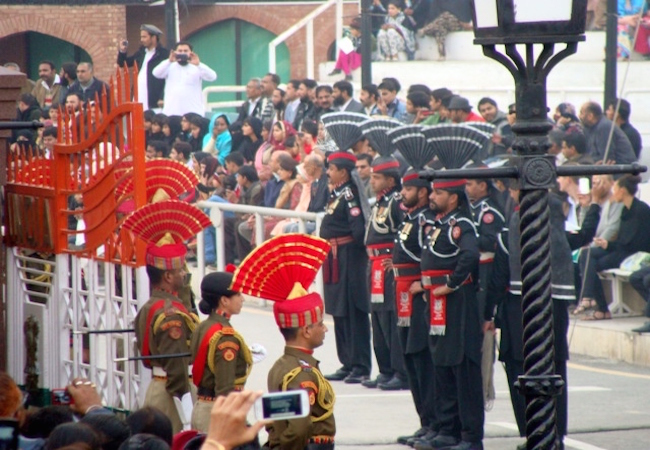Significance of May ‘98 tests in South Asian deterrence

By Beenish Altaf
The year 1998 observed the overt nuclearization of South Asia, when both arch-rivals, India and Pakistan, detonated their nuclear devices. 1998 is celebrated as the advent of second nuclear age, whereas the first being cold war that ended in 1991. So, the peril of horizontal proliferation in South Asia embodied another nuclear arms race after the end of the Cold War. Till now, both India and Pakistan have persistently developed more number of nuclear weapons than they have in 1998. Critics believed that both countries have meticulously developed enough nuclear weapons to destroy each other thrice.
The number of nuclear weapons in South Asia, no matter whether it is strategic or tactical, gives birth to numerous hard questions on the deterrence equilibrium and strategic stability. For example, how much of a numerical advantage or additional nuclear weapons does Delhi and Islamabad think they need over the others? Is Islamabad and New Delhi over-reliant on their nuclear arsenals? Critics believe that for maintaining credible minimum deterrence, the credibility of a sufficient number of nuclear weapons has more significance than a trivial nuclear superiority.
The arms race stability in South Asia benefited Pakistan to maintain its minimum, sufficient, survivable and potent nuclear weapons; whereas most of the critics believe that the pace is execrably fast. Nevertheless, Pakistan attributed its development of nuclear weapons to the widening conventional asymmetry with its neighbour. It is argued that conventional asymmetry is inversely proportional to lower nuclear threshold, which resulted into an execrable nuclear weapons development in South Asia. Pakistan is advocating the rising conventional disparity, putting it in a perilous road to maintain credible minimum deterrence. One critic raised questions about CMD as renunciation of nuclear war fighting.
Ironically, Pakistan is surrounded by two nuclear neighbours and that’s the basic reason that motivated Pakistan for nuclear tests, and that was the best timely decision by Pakistan. As there was a need to maintain balance of power and necessary deterrence in the region keeping in mind the ever untrustworthy relations between India and Pakistan.
However, it is imperative to highlight the most concrete driving agent behind such crucial and highly-criticized decision of conducting nuclear weapons test by Pakistan. Obviously, it was India who had actually started this race of acquisition of nuclear weapons in the region. It was India who actually upset the balance of power in the region. Though, Pakistan was long claiming that it did possess nuclear technology but did not intend to test the weapons. However, circumstances nudged Pakistan to test nuclear weapons for deterrence and balancing of power. No country can overlook its security concerns and issues.
Evidently, Pakistan has fought three wars and has many borders collide with its immediate neighbor India since its inception. Furthermore, India ironically designed its Pakistan centric foreign policy to prevail its supremacy in the region and also lobbied with developed nations. It’s an open secret that numerous trade and military sanctions were introduced to impose on Pakistan in that decade. However, the US did impose a few on Pakistan. But the then government of Pakistan took a hard decision of not giving up to international pressure and triggered the button of nuclear weapons test to intact sovereignty and security of Pakistan. Local and foreign observers acknowledge that without being a nuclear power, the country might have suffered a serious setback when its eastern neighbour had amassed troops on the border in a threatening posture in 2002.
History of nuclear weapons in the region can be traced backed to 1974 when New Delhi showed its intent to become a nuclear power. During the same time period, it exploded an atomic device, a weapon of mass destruction and named it “Smiling Buddha”, rather. After that incident, the then prominent leader of Pakistan, Zulfiqar Ali Bhutto, commissioned a team of experts to begin preparations to respond on the basis of “even if the nation has to eat grass” to achieve it. Fortunately, succeeding rulers also understood the need and didn’t prove to be an obstacle in the way of achieving the target of becoming nuclear power.
After the bold decision of conducting nuclear weapons test, Pakistan faced isolation at international stage. The facts were not highlighted by the international media particularly in the context of ever-existing threat to Pakistan from its conventional rival India. New Delhi’s shrewd policies, particularly of acting as a hostile upper riparian and its adamant stand on Kashmir, cannot by any stretch of imagination be termed friendly. The achievement of status of nuclear power has unified the people of Pakistan.
Finally this is the day of pride and revival and celebration of this day refers to acknowledgement of all the scientists’ efforts for making Pakistan security unconquered and unchallenged. The day of May 28th, 1998 was a remarkable day not only alone for Pakistan but also for the whole region as after that threat of unbalanced power in the region lost its existence. May Pakistan being nuclear power would be able to play its due role in maintaining peace in the world. Long Live Pakistan!




